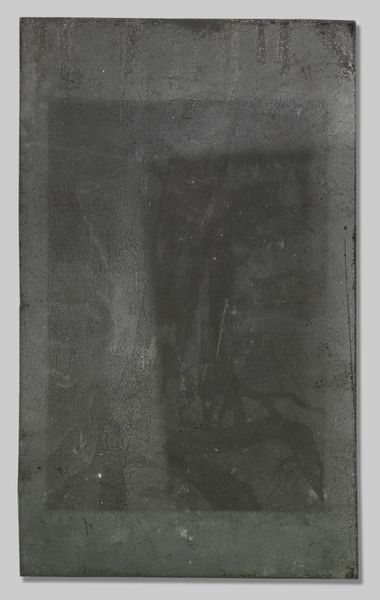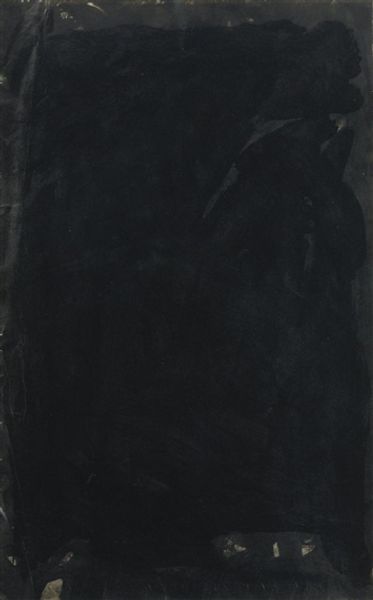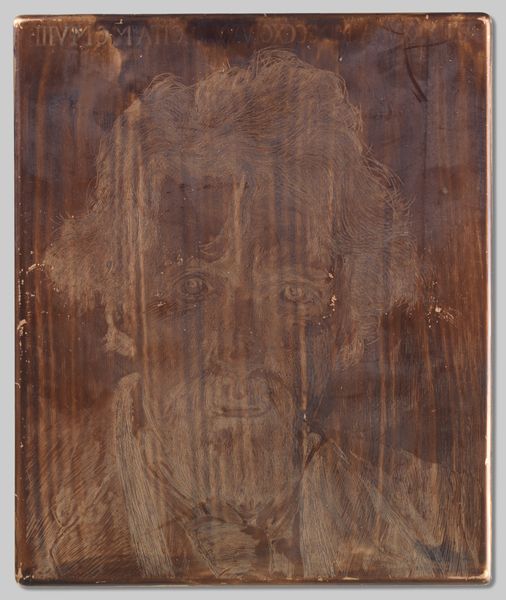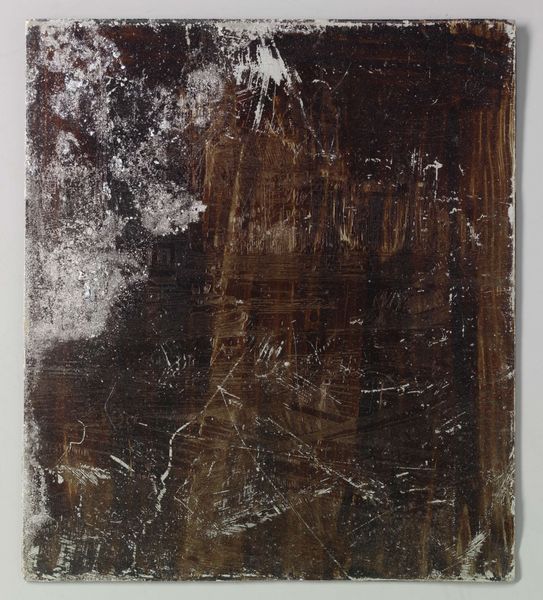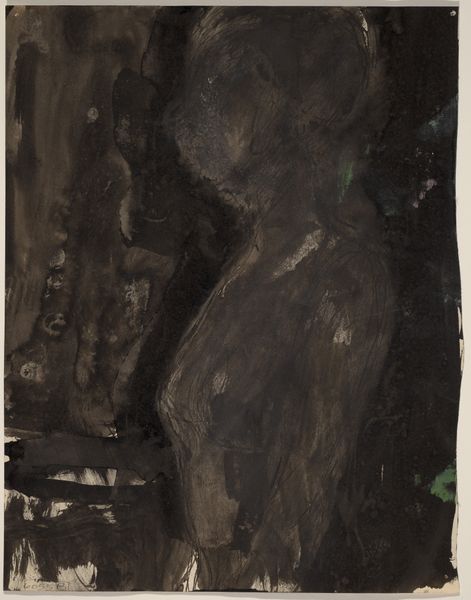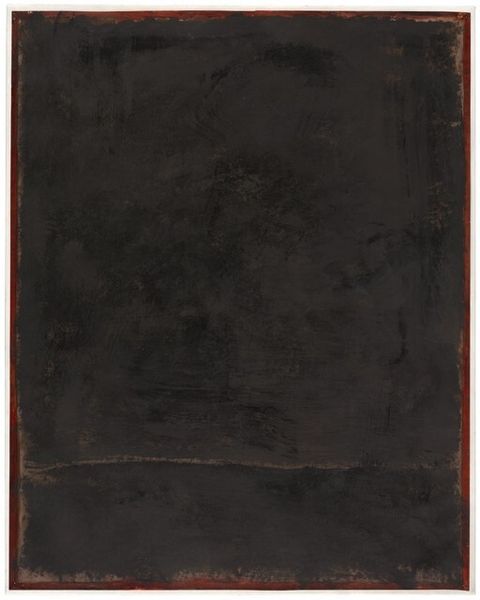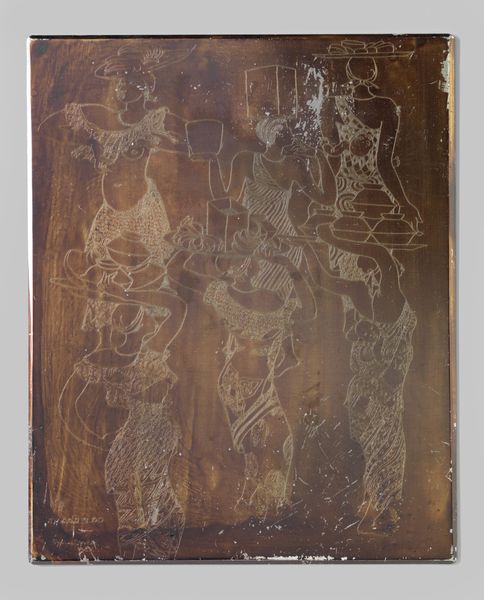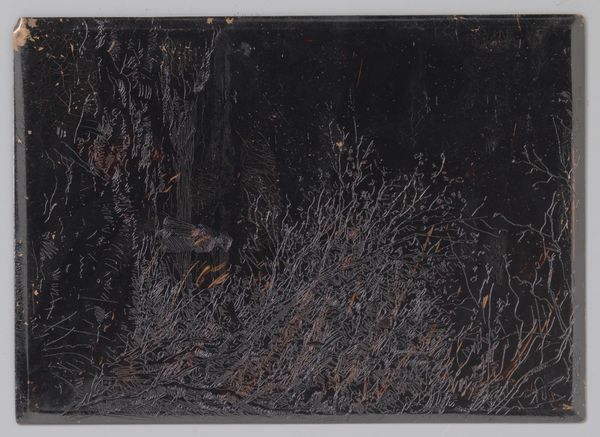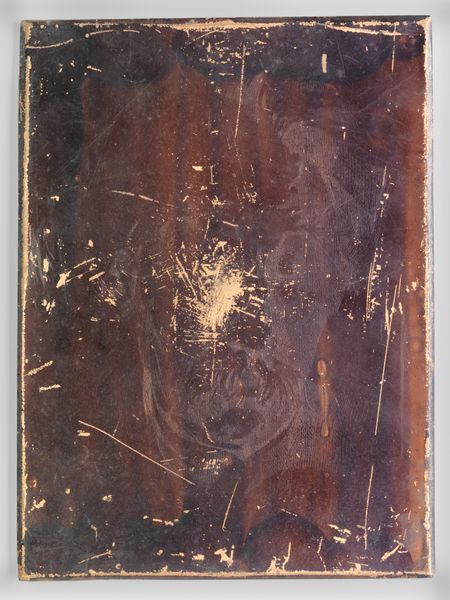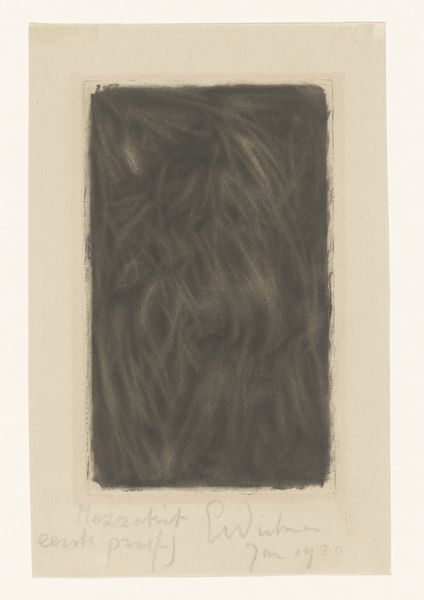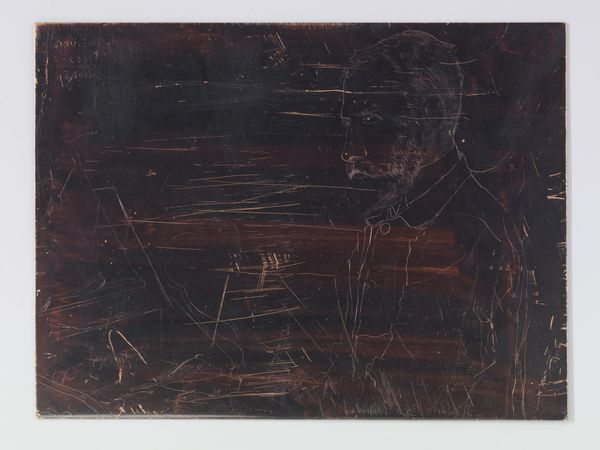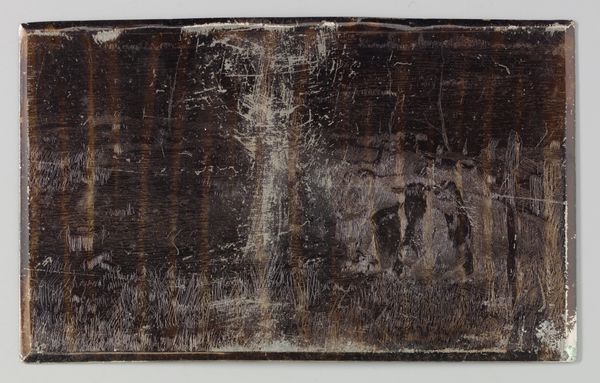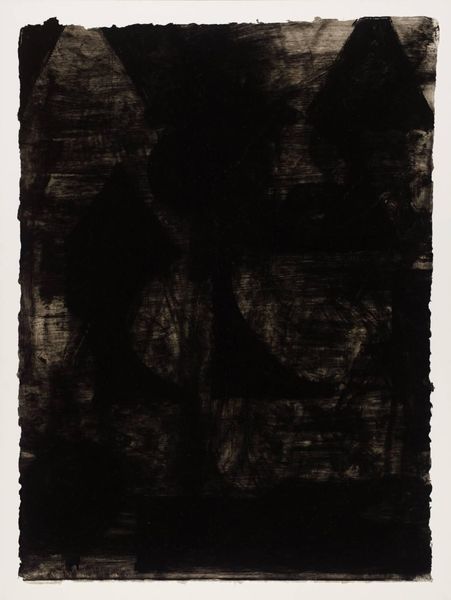
mixed-media, painting, oil-paint, impasto
#
portrait
#
mixed-media
#
painting
#
oil-paint
#
painted
#
impasto
#
mixed media
Dimensions: height 160 mm, width 121 mm
Copyright: Rijks Museum: Open Domain
Curator: Here we have Jan Veth's 1887 piece, "Portret van mevrouw Anna Cornelia Veth-Giltay", housed here at the Rijksmuseum. The work employs a mixed media technique with impasto and oil paint on canvas. Editor: Woah, it’s dark, isn’t it? It feels like staring into a shadow, a memory barely held onto. Curator: That’s a fascinating reaction. Jan Veth was quite the prominent figure in Dutch art and intellectual circles. This portrait, though somber in its tones, is also representative of the late 19th-century interest in psychological realism, and the use of dark hues creates an intimate atmosphere, almost as if you're peering into the sitter's inner world. Editor: I see what you mean about the realism, but my first thought went straight to something unfinished. It's almost unsettling—like you're catching a glimpse of something that wasn’t meant to be seen, a thought halfway formed. The impasto gives the faint face a palpable sense of presence, which, given how faint it is, makes it more present. Strange contradiction, huh? Curator: Not at all! Impasto does give it texture, a literal layering of material, to represent the complex, layered experience of being human, the psychological realism of the portrait captures. Think about it in the context of the era: portraiture was about more than just capturing a likeness; it was about conveying the subject’s social standing and character. Editor: True. And maybe this darkness reflects the constraints placed on women of that time? You almost have to fight to make her out. She's there, but also sort of hidden. As an artist, that kind of ambiguity intrigues me way more than a perfectly polished portrait ever could. I think that unfinished feel leaves more to the imagination, it's as though the canvas is longing to unveil the mysteries of identity. Curator: It's certainly a captivating piece that prompts a multitude of interpretations, bridging personal experience with social understanding of portraiture, a cultural art form. Editor: Exactly. It goes to show that sometimes what's left unsaid—or unpainted—speaks volumes. And in a way, she's more present this way. Curator: A wonderfully intuitive reflection on the portrait, indeed. Editor: Well, that’s how art should speak, right? It gives space for dialogues within ourselves and the world around us.
Comments
No comments
Be the first to comment and join the conversation on the ultimate creative platform.
